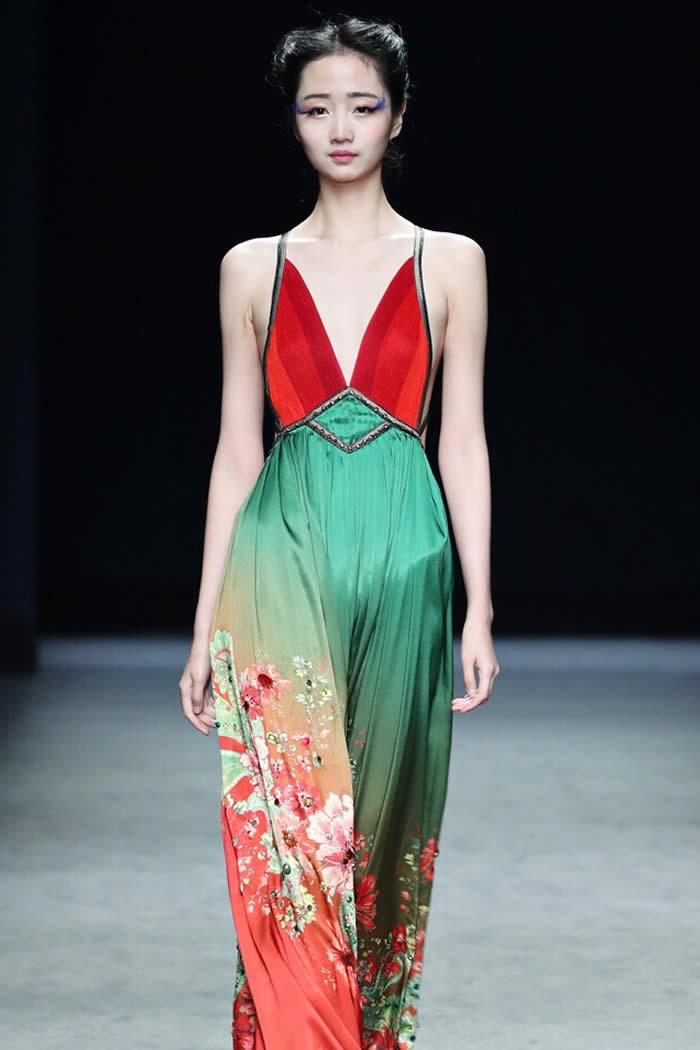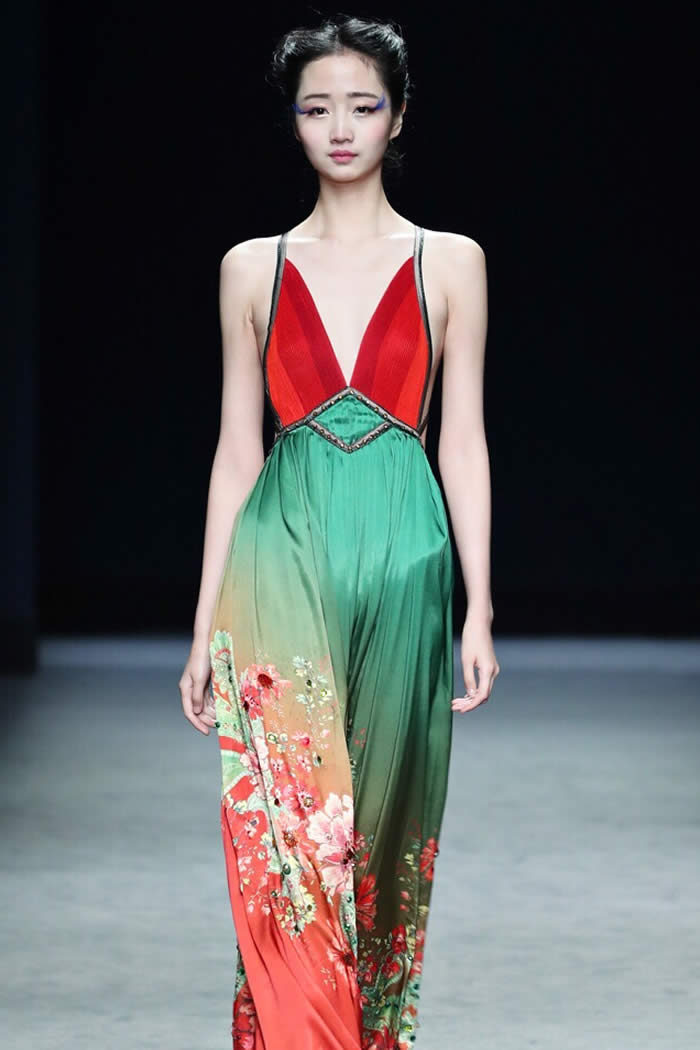Combining physical runway shows with 5G livestream, AI and VR shows, the event from Oct. 21 to 27 also marked Shenzhen’s debut in presenting spring-summer collections since it was launched in 2015.
Sustainability was a strong thread throughout the agenda. Shenzhen-based grande dame of Chinese fashion design Zhu Chongyun kicked off the fashion week on the terrace of 2019 Pritzker Prize winner Arata Isozaki’s Shenzhen Concert Hall, creating a dialogue between fashion design and the city’s unique skyline. Zhu is also co-owner of fashion empire Shenzhen Marisfrolg Fashion Co. Ltd., whose house labels include Krizia, the Italian fashion brand she acquired from founder Mariuccia Mandelli in 2014.
Zhu’s minimal and poetic collection with lots of basic colors and carefully applied Chinese traditional embroidery motifs, like the lotus and white stork, created a strong contemporary Asian elegance reflecting the Chinese ideal of harmony between man and nature.
Also riding the sustainability trend were the latest collections from Distin Kidny, Viein, Jixiangzhai and Zhijiansha, who chose all natural and recyclable materials for the spring-summer season.
Another of Shenzhen’s fashion powerhouses, Ellassay, presented its collection entirely made of biodegradable materials through livestreaming platform Live+.
Sustainability was also a key topic at one of the fashion week’s events, the Wow-Trend autumn/winter 2021/22 conference held at the The Museum of Contemporary Art & Planning Exhibition, the main venue of Shenzhen Fashion Week, and one of the city’s architectural highlights designed by Coop Himmelb(l)au.
“The support of the entire city is one of the characteristics of Shenzhen Fashion Week. Not only are we showing in these amazing venues, we have set up subvenues in districts like Longgang, Nanshan and Longhua with over 20 events, like our Fashion Summit,” said Pan Ming, president of the Shenzhen Garment Industry Association. “Our goal is not only to create a fashion week with international standards, but we also aim to include the innovative cultural characteristics of Shenzhen.”

Shenzhen Fashion Week has within the last five years evolved into one of the leading events on the Chinese fashion calendar, and has ambitions to become a global player. “Shenzhen Fashion Week is jointly created with IMG and we work with top international teams for our productions. Many international designers, including ‘Project Runway’ winner Leanne Marshall and Bibhu Mohapatra, have shown at Shenzhen Fashion Week, which proved to be the perfect gateway to enter the Chinese market and set up cooperation with local partners,” the garment association president added.
The sixth anniversary of Shenzhen Fashion Week coincided with the 40th anniversary of Shenzhen becoming one of China’s earliest special economic zones and a trailblazer in reform and opening up. What once was a small fishing village at the Hong Kong border has developed into a key economic hub. In 2019, Shenzhen’s GDP topped 2.69 trillion yuan, or $396.8 billion.
A key player in the development plan of the Guangdong-Hong Kong-Macao Greater Bay Area, Shenzhen is a hub for the Chinese fashion and high-tech industries. In 2019, Shenzhen’s garment industry ranked first in China’s large and medium-sized cities for the 19th consecutive year.
Many well-known Chinese firms are based in Shenzhen, which currently is home to about 2,500 fashion brands, 10 publicly listed fashion companies, with the highest local market share of over 60 percent in high-end shopping malls throughout the country. The sector’s total revenues in Shenzhen in 2019 topped 260 billion yuan, accounting for 10 percent of the entire country’s.
“Scientific and technological innovation is the lifeline of Shenzhen’s development, which is home to many world-renowned tech companies such as Huawei and Tencent, the company behind WeChat. Technology is now the main driver of innovation for the fashion industry; for example, during the epidemic, Eeka Fashion Group’s iFashionCloud used its intelligent production line to produce protective clothing to support the fight against COVID-19.
The new online AI empowered retail platform “Fitting at home” by Marisfrolg creates a brand-new digital shopping experience all with a personalized fashion assistant. Ellassay uses green screen technology to combine offline fashion shows with VR technology, it also was the first high-end fashion brand to open a WeChat Video account. Through digital transformation, Shenzhen’s fashion industry strives to create new opportunities in a digital economy, and is now leading the trend in China,” explained Pan.
Shenzhen’s innovative edge has also attracted international brands, with Burberry unveiling its Shenzhen “social retail” store last July. In partnership with Tencent, the space integrates shopping experience with social media and gaming and customers use the Burberry WeChat mini platform to make a reservation at the cafe, book appointments and other things.


